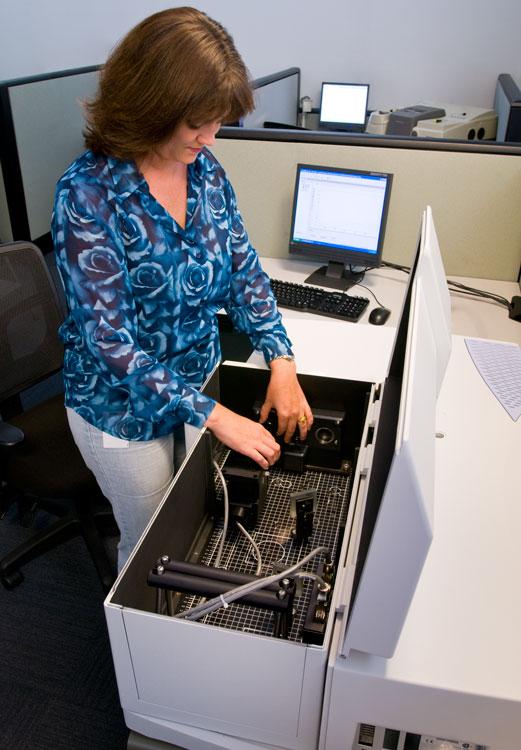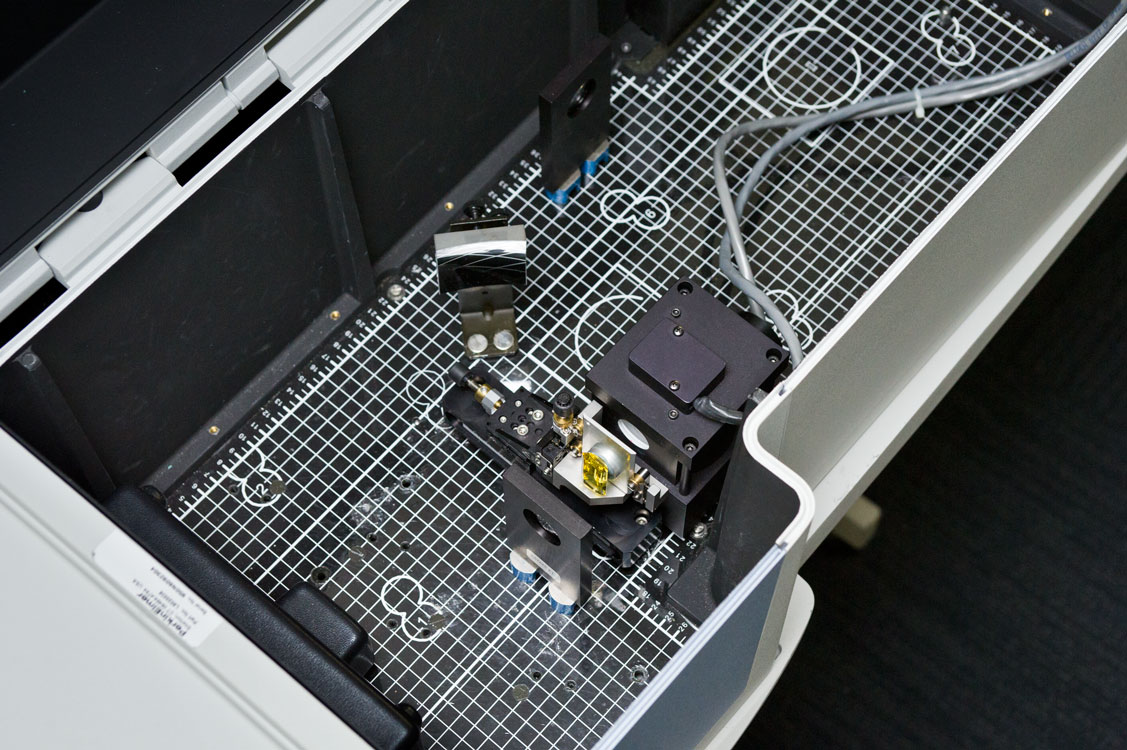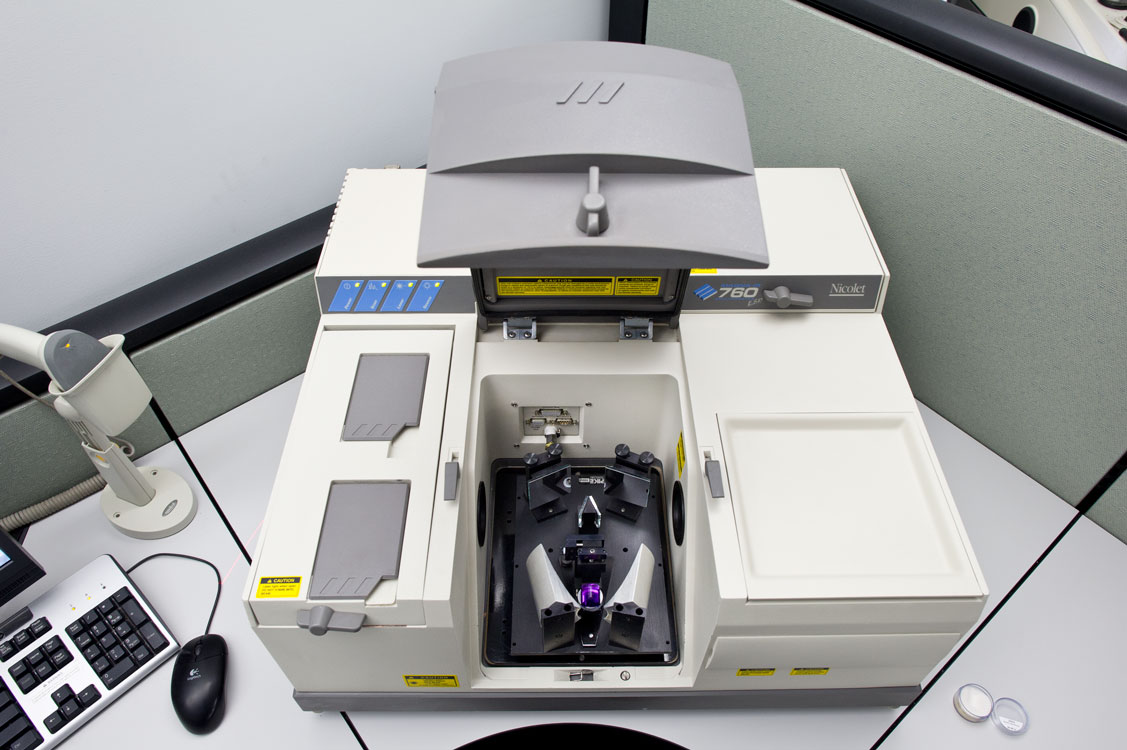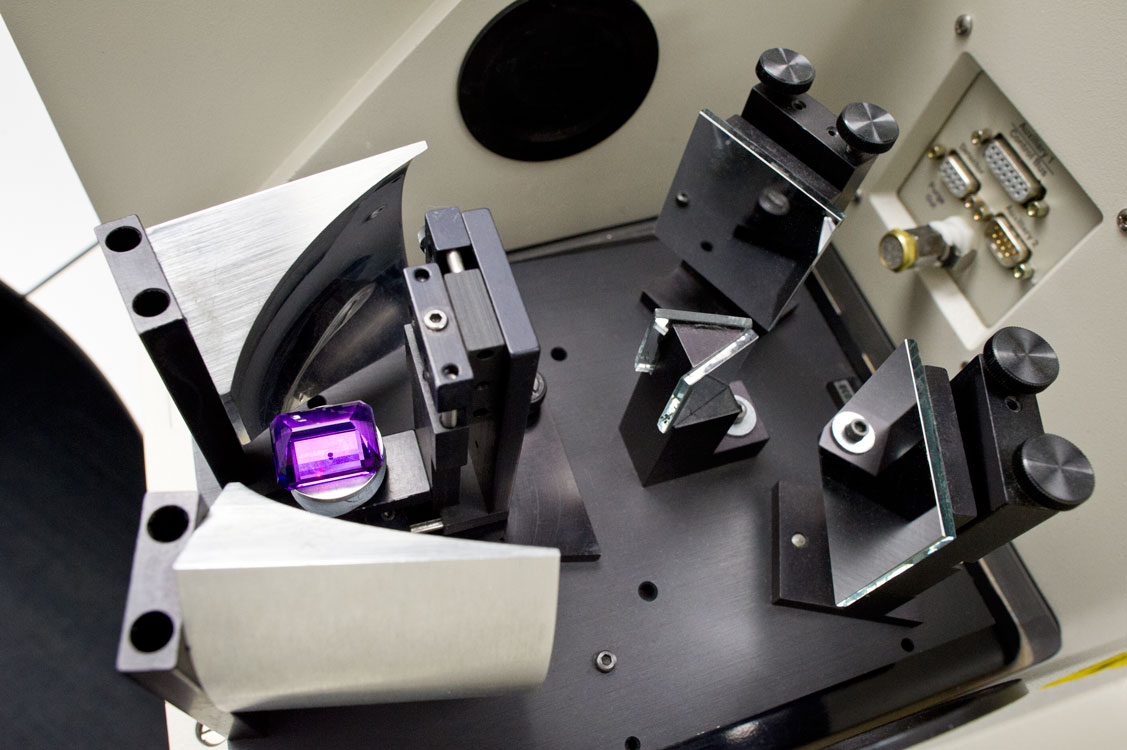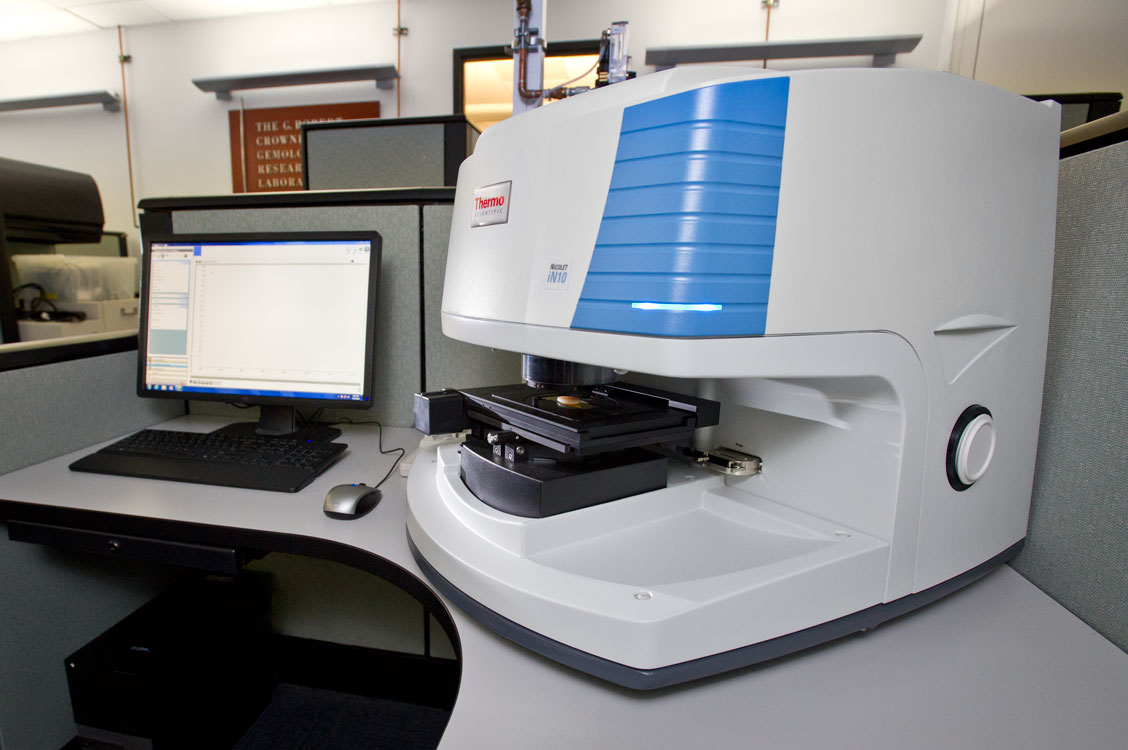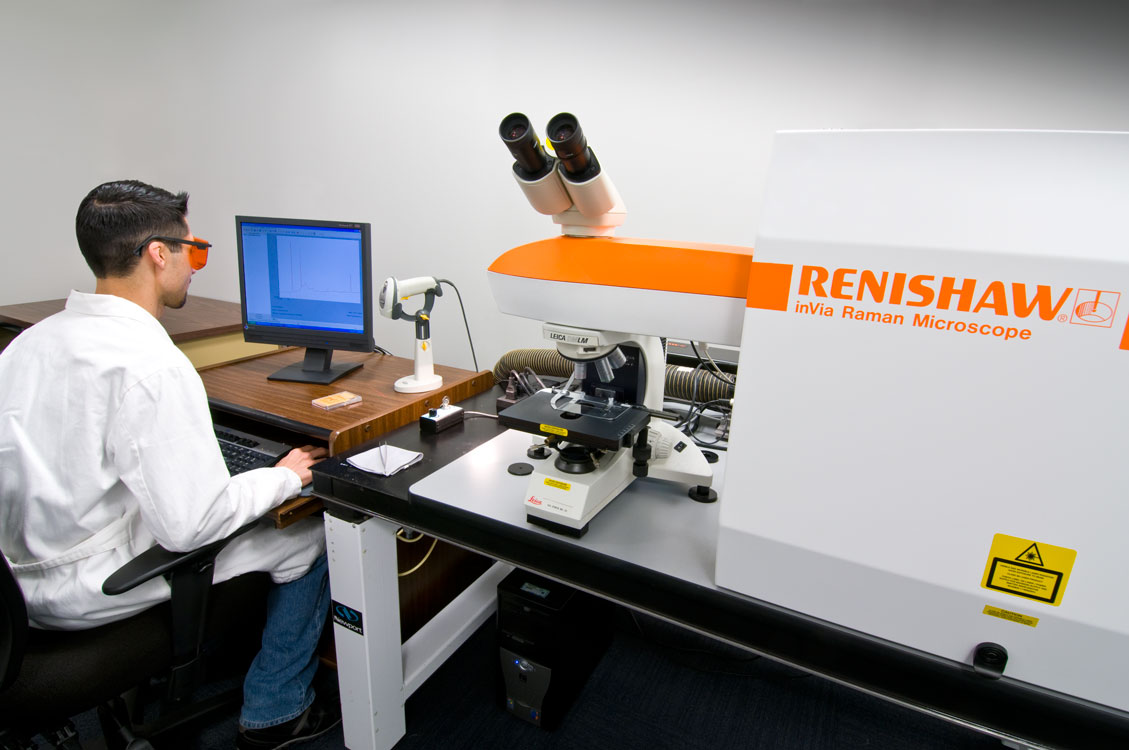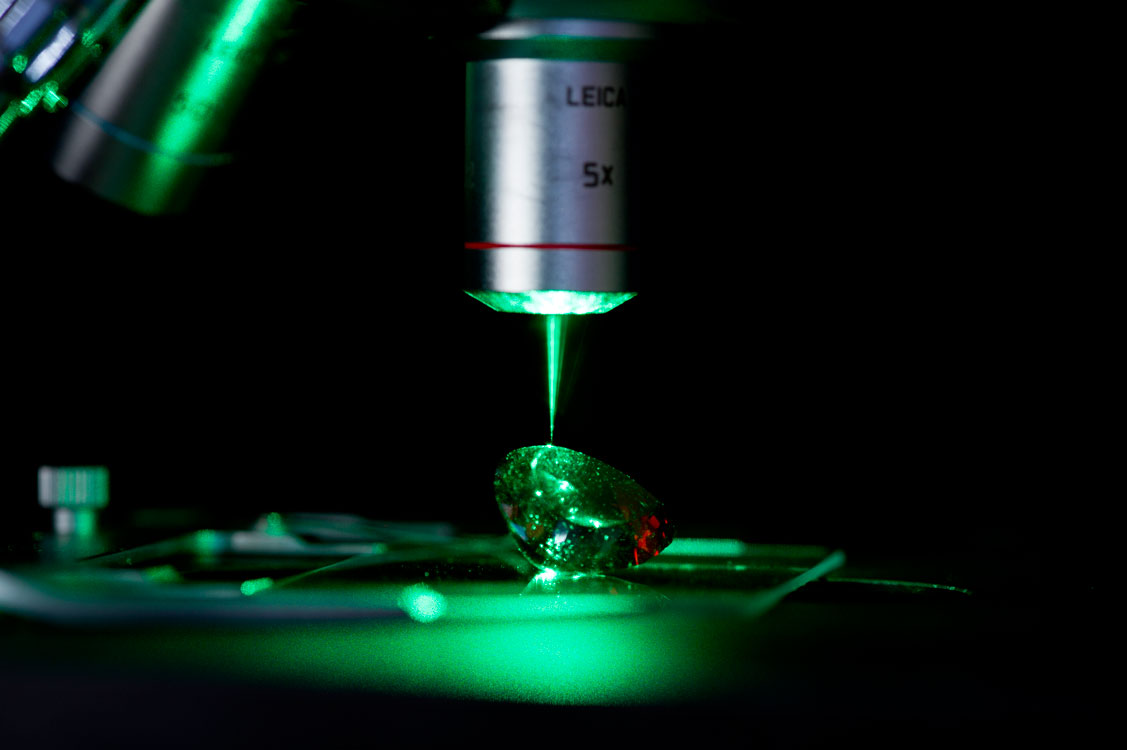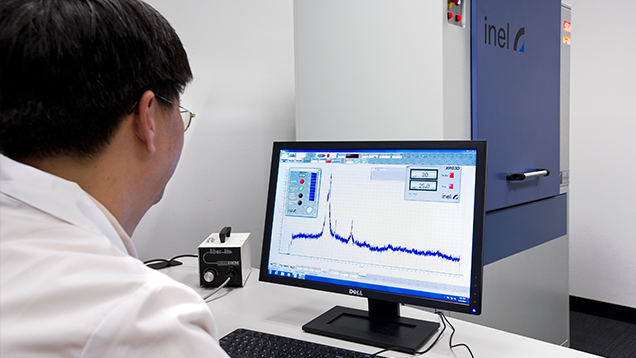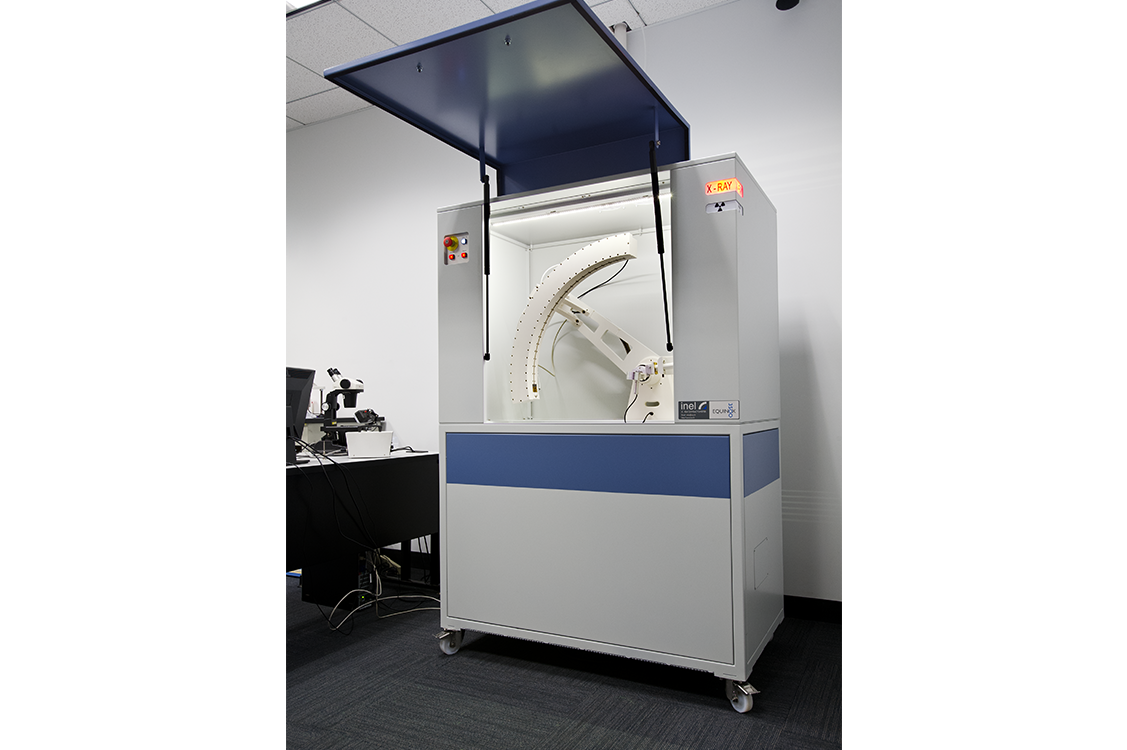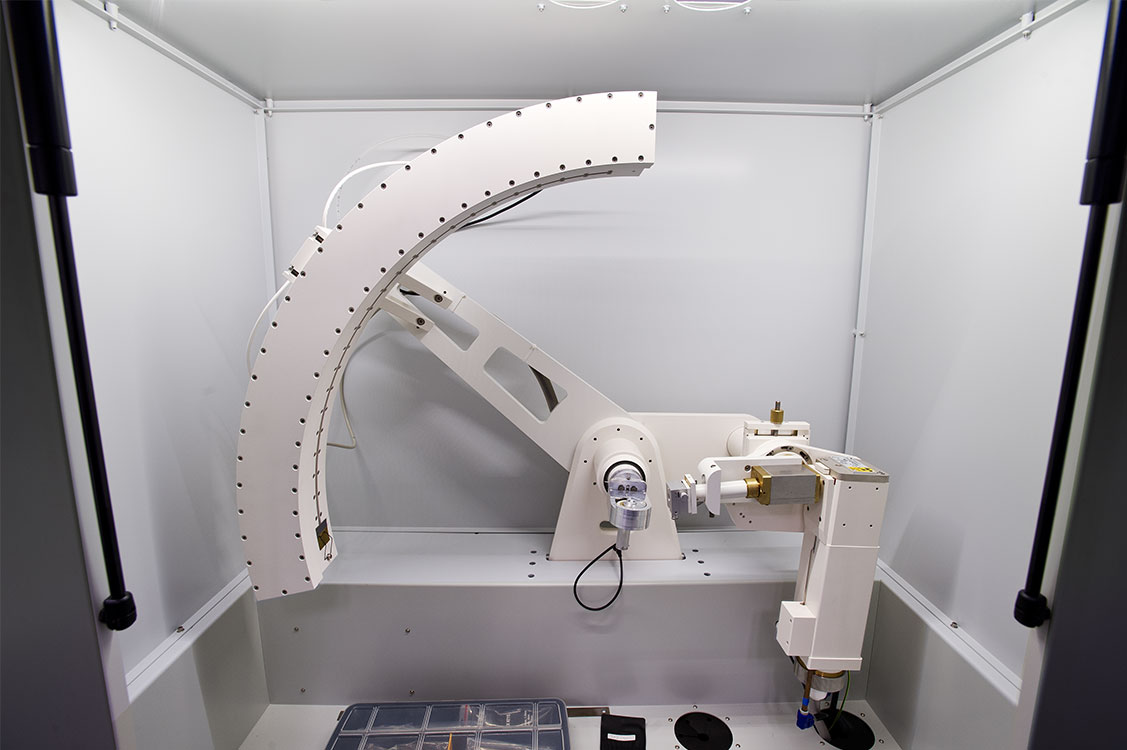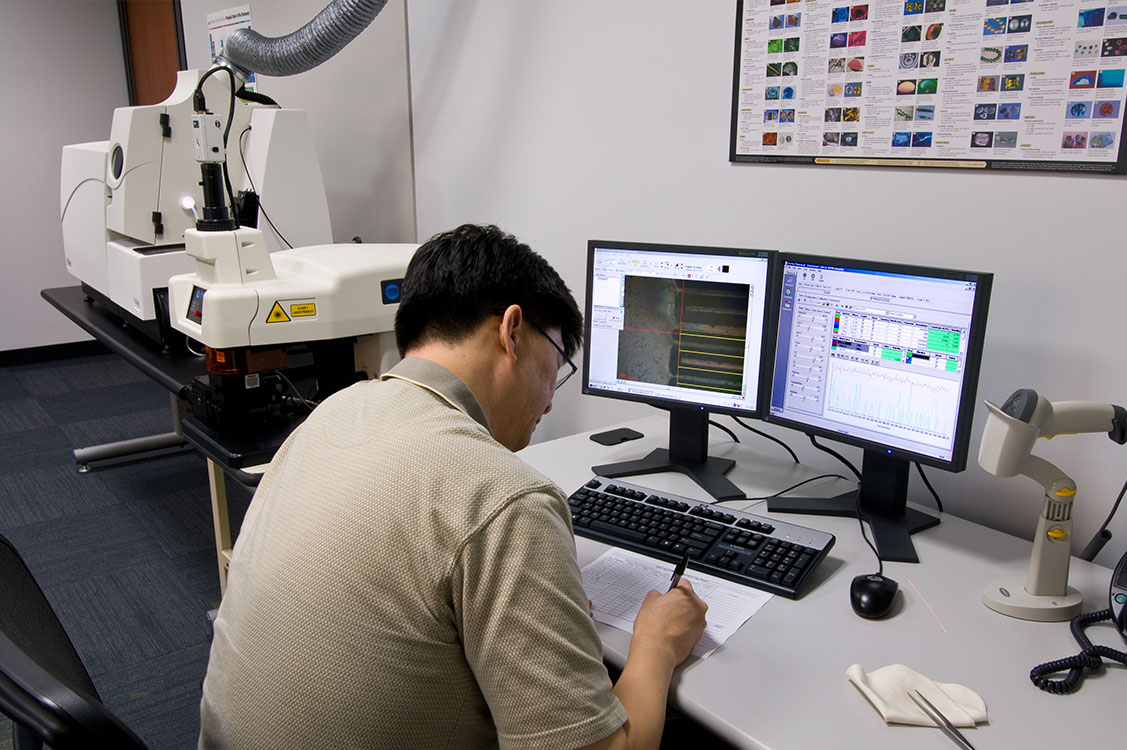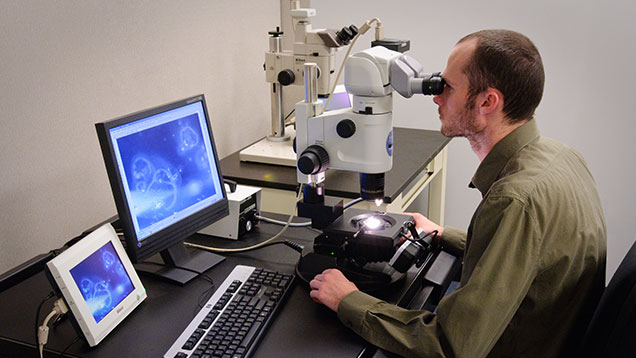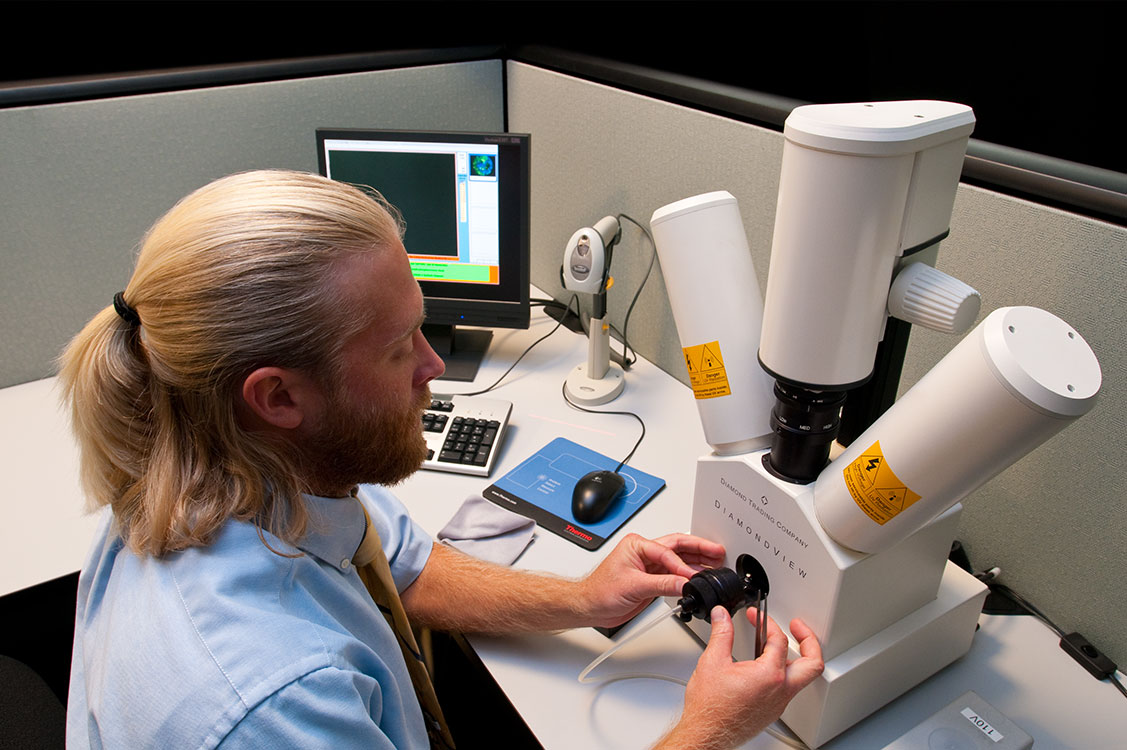Scientific Instruments Help Researchers Tell Gem Stories
Researchers analyze and come to conclusions about the identity of a sample gem by comparing what they find to a database of the numerous gems GIA has examined over the years. They use their expertise and knowledge to look for the distinctive characteristics that reveal a gem’s identity.
The information they gather and the instruments used to collect it can be categorized into light analysis, atomic structure analysis, chemical analysis and imaging, and additional instrumentation.
LIGHT ANALYSIS
Spectroscopy analyzes the way light interacts with the gem. Researchers can identify a gem, and can often determine if it has been treated or is synthetic, by examining how it absorbs or transmits light.Visible Spectrophotometer
A visible spectrophotometer shines a narrow beam of light through the gem by scanning through a series of wavelengths, beginning at the blue end of the spectrum through to the red end. Light wavelengths not absorbed by the sample are transmitted to the instrument’s detector (these transmitted portions can be seen by your eye as the color). The results of this analysis are displayed as a graph that shows the relative transmission (or absorption) of light versus wavelength. Researchers use the information to determine the cause of color of the material.
Infrared Spectrometer
The infrared spectrometer measures the invisible light spectrum, known as infrared. Infrared spectra can help the researcher determine if a gem has been treated, or whether it is a type I or type II diamond. This instrument generates radiation at wavelengths beyond the red end of the spectrum where “light” is invisible to the eye but can be felt as heat. These wavelengths can be absorbed, transmitted or reflected by the sample being analyzed. Materials such as resin, oil, plastic and other substances used for the treatment of colored gemstones have distinct features in their infrared spectra and can be detected by the spectrometer.
Luminescence Spectrometer and Fluorescence Intensity Measurement
These instruments allow us to study ultraviolet fluorescence in gem materials in terms of analyzing either the excitation or emission spectrum of the fluorescence, and they also to measure the visual intensity of the fluorescence.
Raman/Photoluminescence Spectrometer
The Raman Spectrometer uses a laser to illuminate the sample and record its Raman spectrum that can help researchers identify a gem or mineral specimen. The results, which consist of sharp peaks on a graph, are examined and compared to known spectrum library of different kinds of gem materials. The instrument can also be used to record emission spectra of samples using a technique called photoluminescence (or PL) spectroscopy (in which the light from the laser causes the sample to emit energy at specific wavelengths to create a luminescence spectrum). We can also use a separate instrument to collect Raman data for one specific spectral peak across a two-dimensional area, in order to create a map of the spatial distribution of the atomic-level defect in a material that is the cause of that spectral peak.
Electron Paramagnetic Spectrometer
This is an advanced technique that allows us to detect particular types of atomic-level defects with unpaired electrons in materials.
ATOMIC STRUCTURE ANALYSIS
A gem sample is examined at the atomic level through X-ray diffraction. Researchers use this information to determine its chemical structure and identify the material.X-Ray Diffractometer System
The x-ray diffractor system analyzes the crystal structure of a sample by illuminating a powdered sample with a beam of X-rays. The X-ray beam is diffracted, or bent, at specific angles depending upon the atomic structure of the crystal. Researchers compare the results with a standard database of specific angle patterns from known materials. This method destroys a small sample of the gem, but can provide a positive means of identifying the material.
CHEMICAL ANALYSIS
Researches use chemical analysis to determine what elements a gem is made of and if the gem is natural, synthetic or has been treated.X-Ray Fluorescence (XRF)
X-Ray fluorescence helps researchers identify the chemical elements in a gem. By illuminating the sample with energy from an X-ray source, this system records the emission of X-rays of particular energies characteristic of the chemical elements present in the gem. The instrument performs a rapid, nondestructive, qualitative chemical analysis of samples that have a large, flat polished surface. The technique can quickly tell the researcher what chemical elements are present in the sample.
Laser-Ablation, Inductively Coupled Plasma, Mass Spectrometer (LAICPMS)
This advanced instrument helps researchers determine how much of each element is present in the sample. A beam of light from a laser is focused on the surface of a sample and it ablates, or removes, tiny particles from the surface. These particles are moved by a flowing gas into a high-temperature plasma torch where they are broken down so that the individual atoms that can be identified by the detector. This makes it possible for the researcher to make a quantitative chemical analysis of the naturally occurring elements, even down to low concentrations in the sample. A very small part of the sample is destroyed in the process.
IMAGING
Photography, specifically photomicrography, offers researchers a way to capture close-up images of features or inclusions within the gem. Researchers use this information to determine the circumstances around how the gem formed and, for some gems, where it originated.Photomicroscope
A binocular photomicroscope is used to capture photographic images of the features, or inclusions, in a gem. Researchers use this information to help identify a gem and determine if it is natural, treated or synthetic.
DiamondView
The DiamondView instrument helps distinguish most natural and synthetic diamonds by using a short-wave ultraviolet source to produce fluorescence patterns. The instrument was developed by researchers from the De Beers Diamond Trading Company in the United Kingdom in 1996.
X-ray Transparency Imaging of Pearls
X-ray imaging is an important technique to distinguish natural and cultured pearls.
Digital Imaging
We are able to capture digital images of gemstones to analyze their faceting patterns and proportions, and their light-return patterns which affect their face-up visual appearance. We can also use a similar technique to help evaluate the clarity features of a gemstone.
Scanning Electron Microscope
This instrument uses a focused beam of electrons to produce a high-magnification image of the topography and composition of a very small surface area of a sample material.
ADDITIONAL INSTRUMENTATION
High-Temperature FurnaceWe can use this furnace to heat gem materials to specific temperatures and particular oxidizing or reducing atmospheres to better understand the heat-treatment of gems and the thermal behavior of solid materials.

